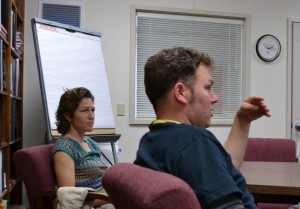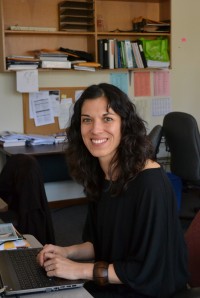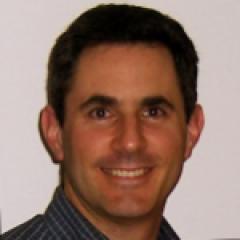Teaching Career Pathways: Leading Professional Development
Note: in October 2012, Accomplished California Teachers will release the policy report “Promoting Quality Teaching: New Approaches to Compensation and Career Pathways.” The following post is the first in a series of profiles showing how California teacher leaders are beginning to develop and follow diversified career pathways. California teachers, and our peers around the nation, are looking for opportunities to innovate and lead in our field, but without having to leave the classroom. Our argument is that educational leadership will improve the more its carried out by those still in the classroom, and that students will benefit from having more accomplished educators remaining the in classroom rather than taking on entirely non-teaching positions.
This profile looks at the new approach to professional development and teacher leadership in San Mateo Union High School District. ACT would like to thank Superintendent Scott Laurence, former Associate Superintendent Matt Biggar, and Professional Development Coordinator Genevieve Schwartz Thurtle for their assistance.

Teacher leaders reviewing and planning professional development at San Mateo Union High School District (May 2012; photo by the author)
It’s a Friday afternoon near the end of the school year – not anyone’s typical idea of the perfect time to do important work in education. But in a conference room in the central office of the San Mateo Union High School District, several teachers have gathered with a district administrator to review their work over the past year, and strategize about improvements for the next school year, beginning in three months. However, the work in question is not teaching; these educators are teacher leaders who spend part of their day in the classroom, but are also responsible for supporting the professional development of their peers in the district.
One by one, these professional learning facilitators review their work for the others at the meeting, evaluating the successes and challenges of the year. Everyone has plenty to say on both fronts. I’m hearing about teachers learning to incorporate more literacy and math skills across subject areas. Teachers are using technology to help align their practices and assessments, and figuring out ways to make transitions smoother for new personnel. Teachers are working with peers at their school sites and across the district, sharing details about their instructional practices. They engage in critical thinking and evaluation about their future work, strategizing about the support and professional development they need in the coming school year. The enthusiasm for this work is clear, but the list of challenges is just as long. How can teachers find more time to meet? How can teachers establish and reinforce norms for greater productivity in their collaborative work? How can teachers be confident in their planning when the state, county, and district are still working out essential aspects of the Common Core State Standards transition and implementation? And at the most fundamental level, how can they ensure that their professional development really improves their daily practices to help students learn?
The meeting moves quickly, with everyone focused and businesslike – and teachers are doing almost all of the talking. The district administrator in the room asks clarifying questions, provides information, suggests ways to work more effectively with principals in the district, and most importantly, offers support to the team by having them identify specific needs that can be addressed from the district level. The fact that the team is comprised of teachers rather than district staff keeps the discussion grounded in practical considerations: “I’m not sure if teachers have the psychological bandwidth for that right now,” one teacher says regarding a proposal to overhaul some curricular resources. Another teacher respectfully pushes back on that idea, arguing for the necessity of doing the work sooner rather than later. Implicit in the response is a constructive criticism of the way teachers have approached similar situations in the past.
This exchange illustrates an important point. People looking from the outside in sometimes wonder if peer leadership and peer evaluation will be sufficiently demanding. How can they truly be held accountable if administrators don’t provide some enforcement? It’s a valid question, but in fact, every system I’ve heard of that puts teacher in positions of responsiblity for their peers has resulted in stronger accountability. I’ve read about it in peer assistance and review programs in California, and going further back in Ohio, and I think it’s evident in this meeting in San Mateo. The constructive criticism of teachers comes from a peer, and I think that makes it more effective than if it had been voiced by a district administrator. The same idea applies in sports. Imagine a baseball team looking to improve: a manager’s criticism of team effort might trigger defensiveness or denial. A team captain making the same comment is likely to be heard differently by the players, their criticisms received differently in the clubhouse. (The same idea can apply in business settings, according to Talent Managementmagazine).
The hybridization in these jobs – teacher and staff developer – is not a new concept. Many schools and districts designate “teachers on special assignment” (TOSAs), and use these people to carry out a variety of work, some of it quasi-administrative, with others engaged in mentoring, tech-support roles, or with districts on curriculum or training. What’s unique about the approach at San Mateo Union High School District is the number of teachers, the depth of their work, and the level of responsibility they’ve assumed for the mission-critical work of guiding and facilitating their peers’ professional development.
The model they’re working with is known as a professional learning community or “PLC” – a highly regarded but unevenly executed model of staff development. While many schools or districts say they use PLCs, the real hallmarks of the approach are not always in evidence. These include:
- participant autonomy (or at a minimum, the opportunity to have input and negotiate the work of the PLC)
- intentional, sustained learning - participants work together to achieve deep learning about essential elements of practice, beyond mere collaboration or sharing of information
- focus on student learning – the goal of professional learning is to better address students’ needs in the classroom
- regularity – PLCs meet weekly, or more, for at least one hour per meeting
The coordinator of all of this work is, naturally, a teacher. Genevieve Schwartz Thurtle spends her mornings teaching high school English, but in the afternoons, she heads over to the district office and becomes the Professional Development Coordinator, supporting the work of her fellow PLC facilitators. The district has put teachers in these leadership roles at the individual schools, at the district level in various curricular areas, and in technology integration. Altogether, this approach represents a sizable investment and a notable shift in the ongoing professional development of teachers in the district, in a way that addresses the chief complaints about inferior approaches – that they lack frequency, sustainability, and relevance. In this model, the work is ongoing and teacher-led.
In our report, Promoting Quality Teaching: New Approaches to Compensation and Career Pathways, the working group from Accomplished California Teachers identified the creation of these types of roles as an essential reform to improve the overall effectiveness of the state’s teaching force. In our prior report on teacher evaluation, we laid out essential components to a robust evaluation system that would help teacher improve and help school systems identify their outstanding teachers. The next step is for schools and districts to put these teachers to work in new ways that strengthen teaching systemwide.
As it stands now, the teaching profession has almost no career ladder for those of us who want to continue teaching. We are faced with two, less desirable options. We can pursue leadership opportunities that bring us out of the classroom, spreading our knowledge but also distancing ourselves from direct interaction with students; as years pass, however, former teachers tend to lose touch with the stresses and complexities of daily teaching. The alternative, staying in classroom, allows us to continue providing excellent teaching for our students; however, with rare exceptions, full-time teaching presents serious obstacles to any sustainable effort at school or district leadership.
It’s too soon to say if this approach, now in its third year, has registered a significant and lasting impact on teaching and learning in San Mateo Union High School District. The people I talked to were confident and optimistic that they’re moving in the right direction, but they are also honest about the challenges of building a system that fundamentally alters and improves teaching practices, student learning, and school culture. Superintendent Laurence came to his position after decades as a teacher, assistant principal, principal, and associate superintendent; he knows that sustainable transformation is going to be gradual, and maintains that whatever problems arise along the way, the solutions are most likely to come from teachers.
-
This post is the first in a series profiling teacher leadership in support of the ACT report Promoting Quality Teaching: New Approaches to Compensation and Career Pathways. Additional profiles, when available, can be accessed with here.
Additional recommended sources created by teachers looking at the future of the profession:
Performance-Pay for Teachers: Designing a System that Students Deserve – a Teacher Solutions report from the Center for Teaching Quality
Many Ways Up, No Reason to Move Out – report by the Bay Area New Millenium Initiative, a project of the Center for Teaching Quality
This blog post has been shared by permission from the author.
Readers wishing to comment on the content are encouraged to do so via the link to the original post.
Find the original post here:
The views expressed by the blogger are not necessarily those of NEPC.

